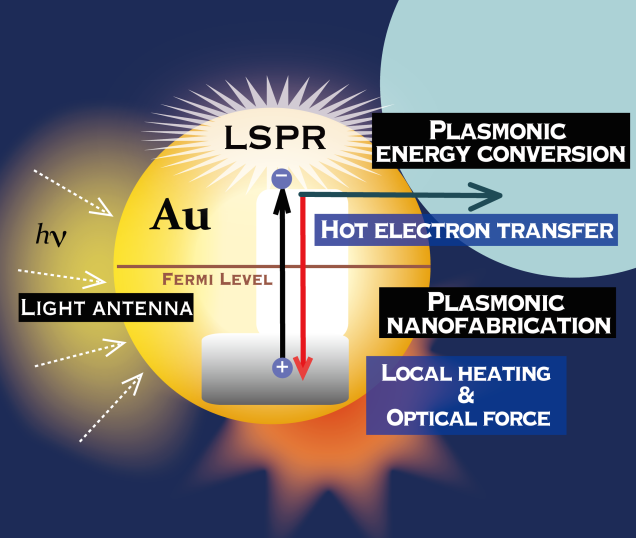プラズモニックホットエレクトロンの移動とプラズモン分子駆動に関する知見: エネルギー変換とナノファブリケーションにおける新たな局面
Insight into plasmonic hot-electron transfer and plasmon molecular drive: new dimensions in energy conversion and nanofabrication
2017年12月15日 NPG Asia Materials 9, e454 (2017) doi:10.1038/am.2017.191
プラズモニクス: 太陽電池に「ホットエレクトロン」を利用

光と金属ナノ粒子の量子レベルの相互作用は、太陽電池の効率を向上させるとともに、ナノエンジニアリングに応用される可能性がある。光子と金属表面の自由電子との結合により、プラズモンとして知られるハイブリッド粒子が形成される。徳島大学の古部昭広と橋本修一は、プラズモンがいかにして太陽エネルギー変換を向上させるか、またナノスケールエンジニアリングの手段となるかについて解説している。プラズモンが崩壊すると、高エネルギー電子が生成することがある。古部と橋本は、こうした「ホットエレクトロン」が太陽電池の動作波長範囲を広げ、光吸収を増大させる仕組みについてまとめている。また、ホットエレクトロンによって生成する熱を利用して、DNAやたんぱく質などの微小物体を物理的に動かし、高レベルの精度で複雑なナノ構造体を構築できることを概説している。
Plasmonics: A hot spot for solar cells
Quantum-level interactions between light and metal nanoparticles could boost the efficiency of solar cells and be used for nanoengineering. A photon and numerous electrons on the surface of a metal can couple together to form a hybrid particle known as a plasmon. Akihiro Furube and Shuichi Hashimoto from Tokushima University review how plasmons can both improve solar energy conversion and provide a means of nanoscale engineering. When plasmons decay, they can create high-energy electrons. Furube and Hashimoto summarize how these ‘hot’ electrons broaden the range of wavelengths over which solar cells operate so that they absorb more light. They also review how researchers can harness the heat created by hot electrons to physically move DNA, proteins and other tiny objects, which will enable complex nanostructures to be constructed with a high level of precision.

